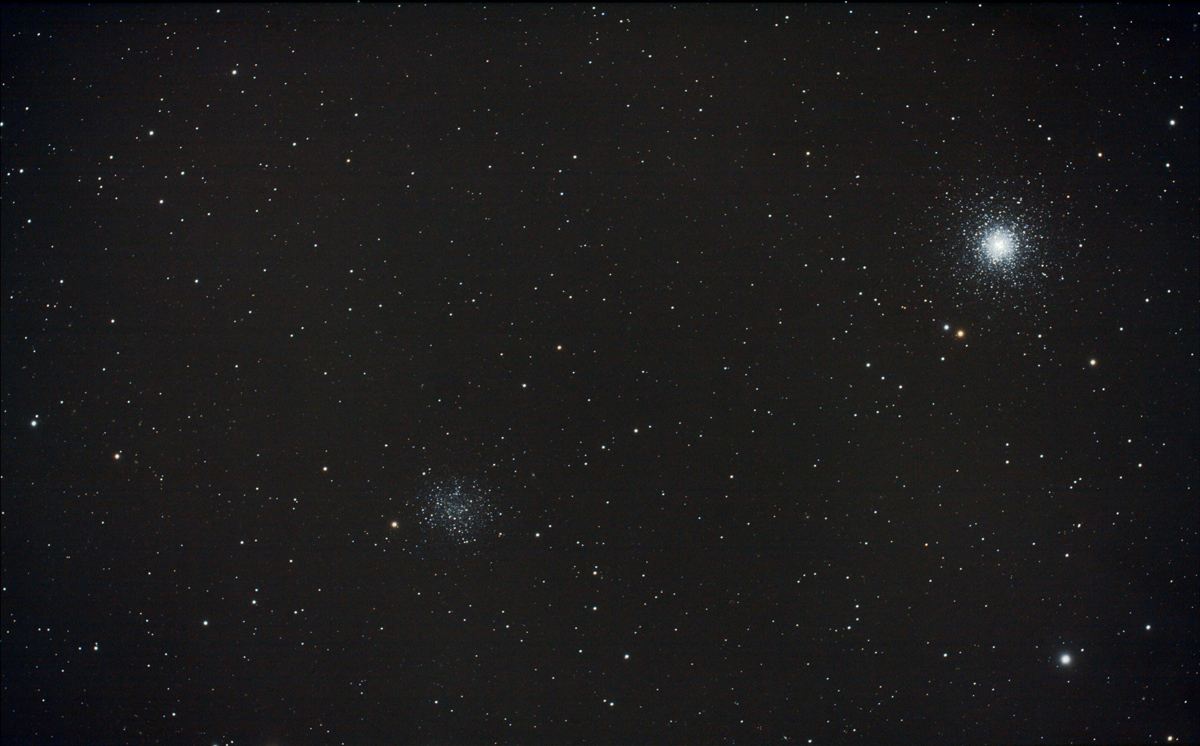
|
Ammassi globulari
nella Chioma
di Berenice (M53 + NGC 5053) Globular clusters in Coma (M53 + NGC 5053) A.R. 13h15m30s - Decl. 17░55'30" |
|
Questa foto dell'ammasso globulare M53 e del vicino
ammasso
globulare NGC 5053 nella Chioma di Berenice Ŕ stata
scattata il
13 marzo 2010 dal giardino di casa ad Arcidosso (GR) al
fuoco diretto di un telescopio Takahashi TSA 102 ridotto
a f/6.3 su montatura
Gemini G41 Obs. L'esposizione Ŕ la somma di 13 frames da 15 minuti ciascuno e di 18 da 2 minuti ripresi con la Canon EOS 40D settata a 400 ISO e modificata con Filtro Baader IR-Cut, ed Ŕ stata effettuata con autoguida Sbig ST4 e rifrattore 120/600 in parallelo. Successivamente i frames sono stati allineati calibrati con Deep Sky Stacker mediante l'uso di 18 dark da 15 minuti, 21 dark da 2 minuti, 21 flat, 21 dark dei flat e 21 bias, poi allineati e sommati con Registar, processati mediante applicazione di stretching, maschera sfocata, deconvoluzione, bilanciamento dei colori, riduzione del rumore. La serata non Ŕ stata particolarmente favorevole dal punto di vista meteorologico in quanto l'umiditÓ Ŕ sempre stata elevata. Nella tabella sottostante sono riportati i valori di temperatura, umiditÓ e brillanza del cielo nella zona ripresa (usando lo SQM-L) a vari orari. This photo of the globular clusters M 53 and the neighbour NGC 5053 in Coma, was taken on march 13, 2010 from the backyard of my home in Arcidosso, in Italy, near Grosseto, at the prime focus of a Takahashi TSA102 telescope reduced at f/6.3 using a Gemini G41 Obs mount. The photo is the sum of 13 frames of 15 minutes plus 18 frames of 2 minutes, taken using a Canon Eos 40D Digital camera, modified with a Baader IR-Cut filter, at 400 ISO and they were taken with a Sbig St4 autoguide on a small refractor 120/600. I calibrated the frames with Deep Sky Stacker using 18 darks of 15 minutes each, 21 darks of 2 minutes each, 21 flats, 21 darks of flat, 21 bias. Then I stacked and summed the resulting frames with Registar, and processed the resulting file with stretching, unsharp mask, deconvolution, color balance, noise reduction. In the table below I put the value of temperature, humidity and brillance of the sky in the zone of the clusters (using a SQM-L) taken in different time. |
| ORA/TIME (U.T.) | Temperatura (Celsius) | UmiditÓ | SQM |
| 21:50 | 1.0░ C | 80% | 20.15 |
| 22:45 | 0.2░ C | 83% | 20.40 |
| 23:30 | 0.2░ C | 92% | 20.40 |
| 00:40 | - 0.4░ C | 96% | 20.60 |
| 01:15 | 0.1░ C | 97% | 20.70 |
| 02:05 | 0.2░ C | 97% | 20.65 |